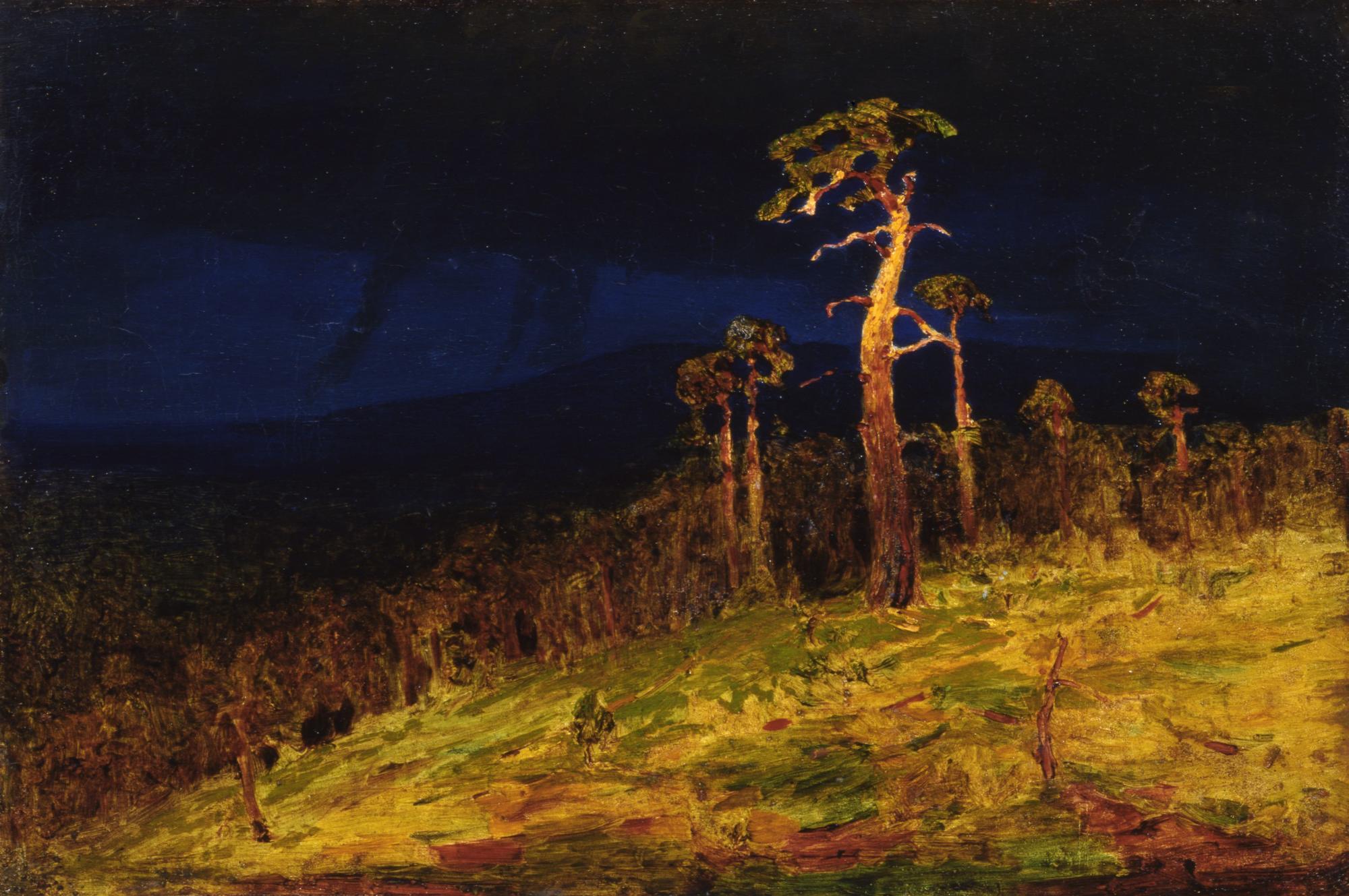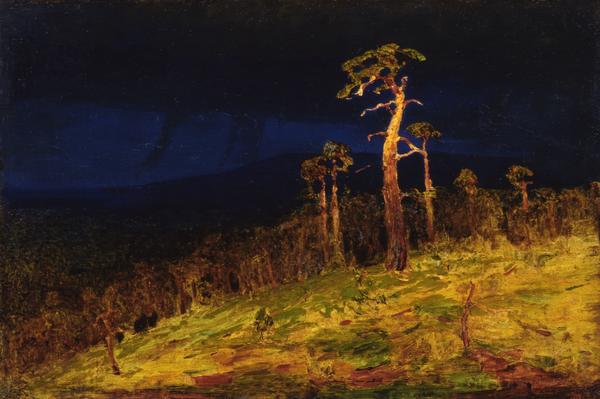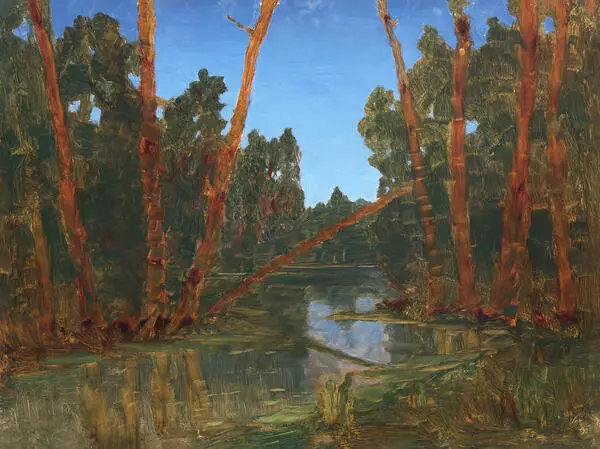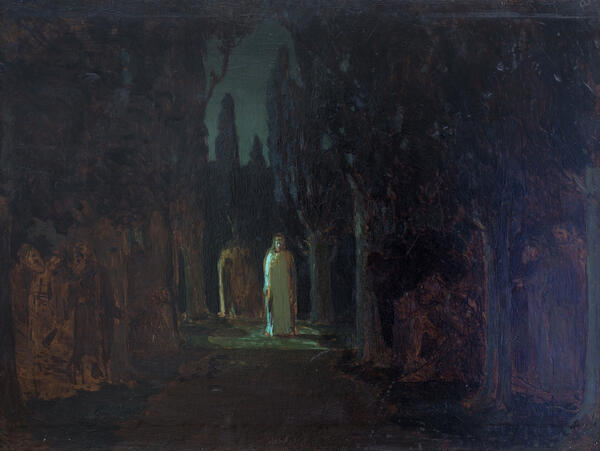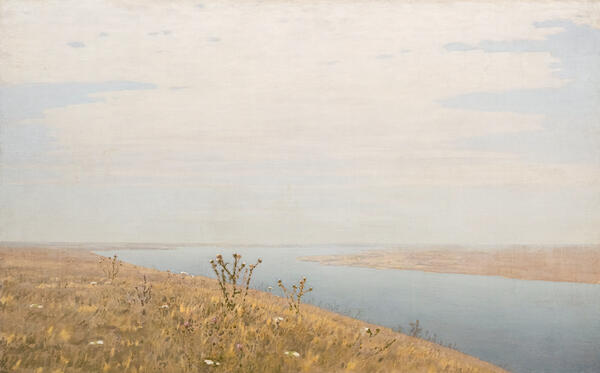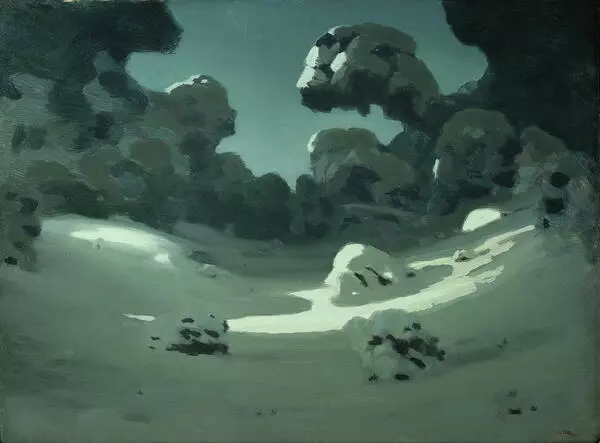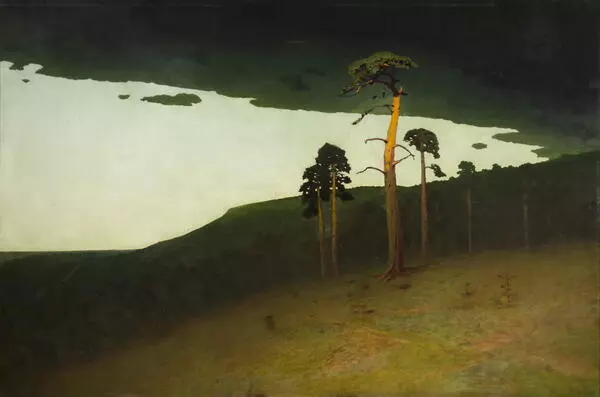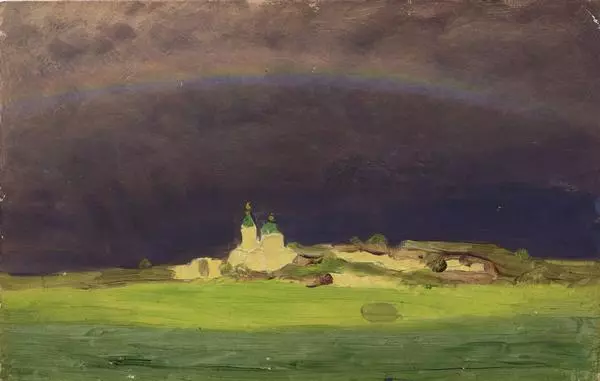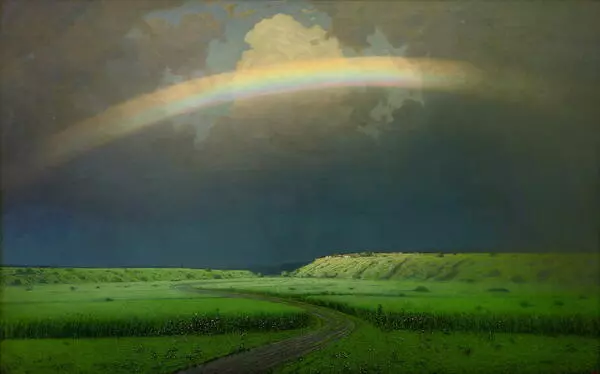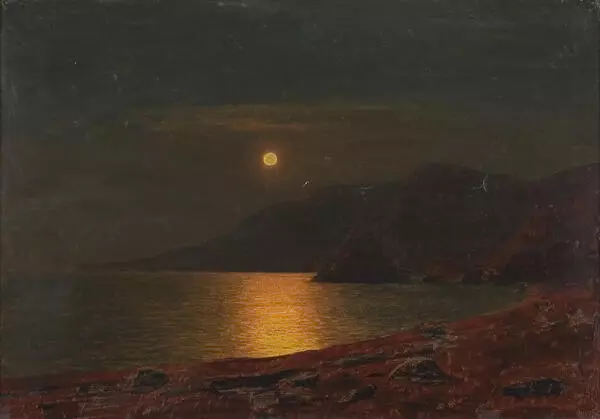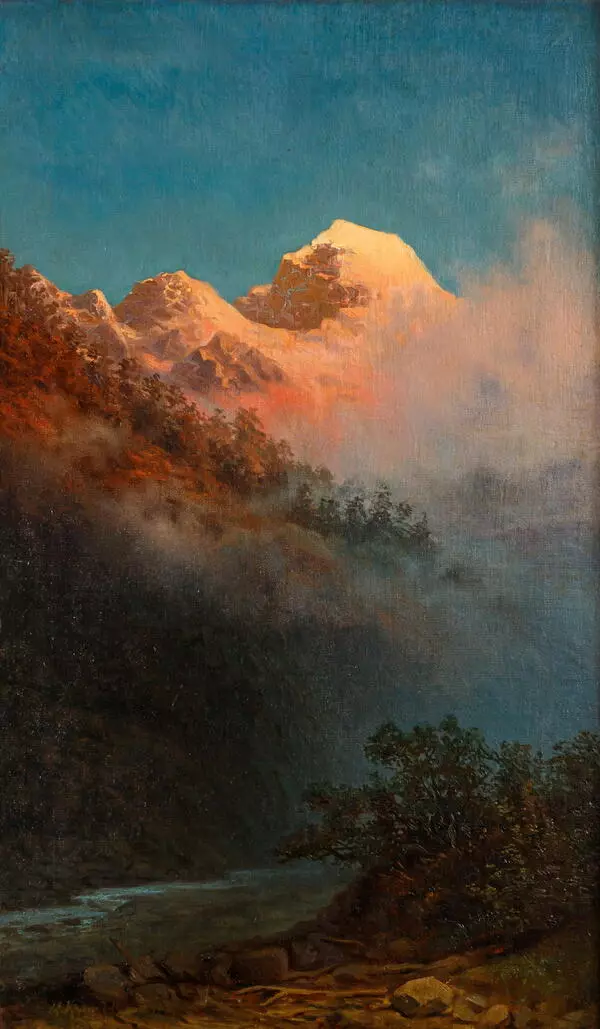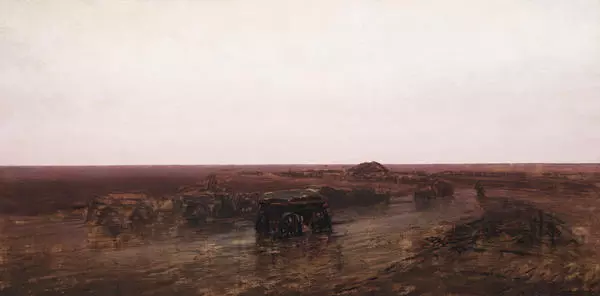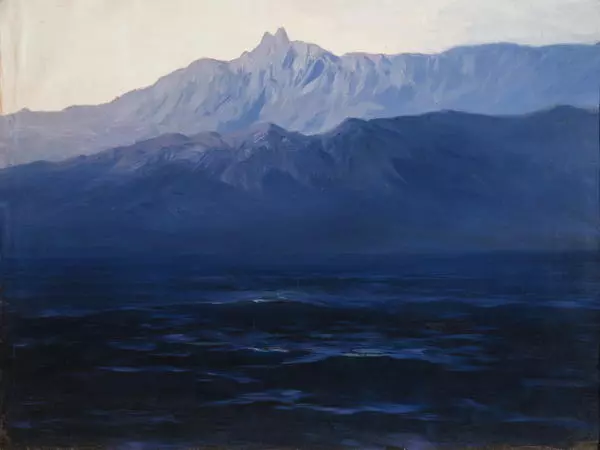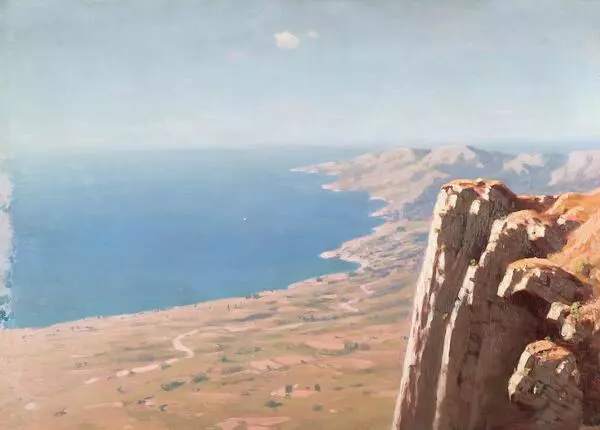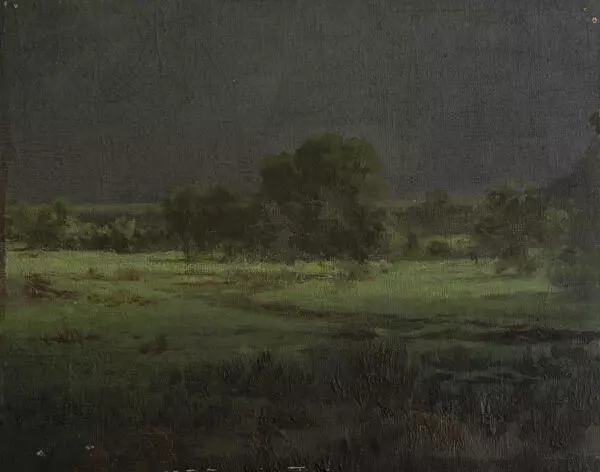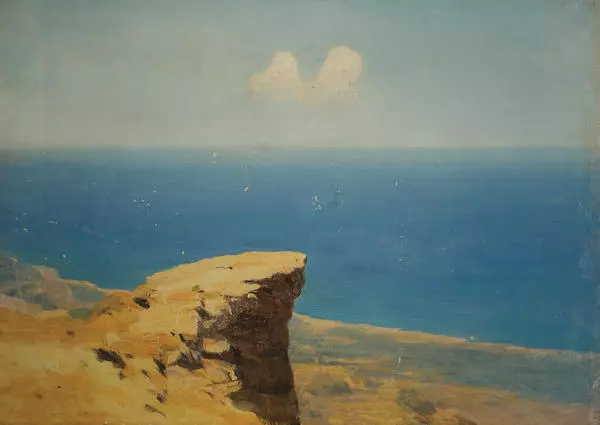Russian artist Arkhip Ivanovich Kuindzhi might be termed as a romantic among Realist painters. He liked to depict unusual moments in the life of nature, rare lighting effects. As an excellent colourist, he achieved in his paintings an amazing radiance of colours, a sort of glow from inside, which gave rise to numerous legends about the art of the painter. According to researchers, with the artwork of Kuindzhi, light came into Russian art.
In the painting ‘In Crimea’ done at the beginning of the 20th century, Kuindzhi deliberately deepens the darkness of shades or the night stormy sky to increase highlights, and thus often violates the laws of artistic truth. In the foreground, there is a hillside with a pine tree having chipped branches, standing open to all winds. Some pine trees stand alone behind, and then there is a solid wall of pine forest. The towering mountain range completes the composition. The blue-dark forestland covering the mountain slopes almost merges with the dark purple clouds benighting the entire horizon. The clouds crawl, grow heavier, and suddenly there is a streak of lightning flashing out a picture of the forest enfolded in silence before the thunderstorm, and illuminating with its unusual bright electric light the pine trees and the hillside covered with fallen golden needles.
The artist applies an almost sketchy brushwork. Broad rich strokes create the impression that he does not paint, but sculpts a form. The painting is characterized by generalized details and a strongly pronounced decorative effect peculiar to Kuindzhi’s artwork. Here it is useless to look for a concrete, really existing piece of nature with all its details. This is not a portrait of nature characteristic of the Landscape-Wanderers, it is a generalized poetic image of Crimea. The artist grabs, as it were, the very essence from a real landscape and shows how he sees it, how he perceives it.
Crimea played a significant role in Kuindzhi’s life. The artist was in love with its wonderful nature. He studied the bright Crimean sun, the changeable sea, mountain landscapes. In 1886, the artist bought a large plot near Kikeneiz, dreaming of building a house-workshop there for young artists, his students, among whom there were talented, subsequently famous landscape painters. When his students decided to create the Kuindzhi Society, the artist ‘transferred to it all his paintings and money, as well as his lands in Crimea.’
